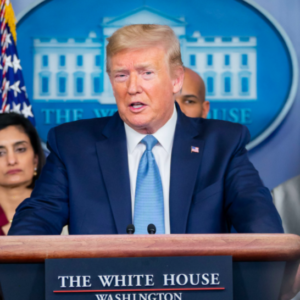Editor’s Note: For another viewpoint, see Point: Yes, Trump Must Go.
There’s no doubt January 6 will be remembered as a dark day in American history. But was the breaching of the U.S. Capitol by angry Trump supporters grounds for removing the president from office— especially when he only has a few days left?
President Trump is being blamed for inciting the “mob” that broke through barriers, destroyed property and terrorized a joint session of Congress that was certifying the results of the Electoral College’s presidential vote. Vice President Mike Pence and assembled lawmakers were evacuated to a safe place as Capitol Police attempted to restore order.
Protesters refused to stand down, despite pleas from Trump, President-elect Joe Biden and others. A Capitol Police officer and four protesters died; others were arrested or injured.
America is deeply divided. This political friction erupted over the disputed claims of a fraudulent and unfair election. The protesters came from a “Stop the Steal” rally held to draw attention to alleged election improprieties and to show support for Trump.
After the insurrection came the finger-pointing. Who’s to blame? Should it be attributed to the angry protesters, a biased media, overly partisan lawmakers, the vice president for not intervening, or the president himself for whipping up the protesters?
The push to blame someone for the ruckus now dominates the national discourse.
The demand to punish Trump is at a fever pitch. There are calls for the vice president and Cabinet to invoke the 25th Amendment of the U.S. Constitution in order to remove the president from office. There are also calls for Congress to impeach Trump again — this time for failing to control his supporters and allegedly inciting them to violence.
But several questions come to mind. First off, did Trump actually incite the violence? Shouldn’t the so-called “mob” be responsible for their own actions? And does this incident fit the modus operandi of Trump supporters?
These are highly relevant questions to ask, especially after a year of violent protests of the Trump administration. In those cases, antigovernment organizers were not held responsible for the actions of others despite their own violent rhetoric. Using that precedent, why blame Trump now for the U.S. Capitol protest?
And what purpose would be served by booting the president from office right now?
David A. Ridenour, president of the National Center for Public Policy Research, denounced the violence but said it should “serve as a lesson about the dangers of intemperate language intended to advance political agendas.” Setting up Trump’s dismissal would be “confirming the deeply held belief of some supporters of the president that his opponents will stop at nothing to remove him from an office.” He noted that this “will only throw more fuel on the fire.”
Many of those concerned about election integrity worry that they have no voice, and Ridenour said “the objective ought to be to change these perceptions, not confirm them.”
It’s clear that other groups have resorted to violent acts to make their point. And there is no evidence of Trump supporters looting or causing mayhem where they have gathered. Under this precedent, it would be unfair to place the blame on Trump.
Trump was elected by the American people to serve until January 20, 2021. He should be allowed to complete that term. Others in public service have been accused of more serious offenses and have not been removed from office. Trump deserves the same respect and treatment.
In spite of the hatred many have for Trump, he leaves an unparalleled legacy that will last for a long time in the hearts and minds of people worldwide. The honorable thing would be to allow him to complete his term.
After all, Bill Clinton did!

